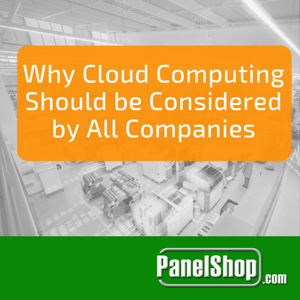 The inherent flexibility of a cloud-based system allows companies to start out small and expand as their needs grow. Irrespective of their requirements, companies should look towards building solutions that incorporate cloud computing if they wish to maintain their relevance in the years to come.
The inherent flexibility of a cloud-based system allows companies to start out small and expand as their needs grow. Irrespective of their requirements, companies should look towards building solutions that incorporate cloud computing if they wish to maintain their relevance in the years to come.
For instance, a manufacturer who wishes to deploy work instructions on an assembly line consisting of multiple legacy units should consider a cloud-based manufacturing execution system (MES) solution. On the other hand, companies that rely on on-premise customer relationship management solutions can start considering moving to the cloud, giving them peace of mind as their clientele grows.
The mix and match strategy seem to work, especially for businesses who are shifting precious data to the cloud. For a company looking into channel partners, it can be wise choice to run a storefront on cloud while maintaining their order management system in a central on-premise solution. The implementation of a cloud storefront allows organizations to improve cash flow through channel sales while at the same time the hybrid scheme makes up for easier transition when the time comes.
Hybrid solutions can also be a right path for companies looking to adopt MESs. A manufacturer with hundreds of factories in different geographical locations can develop a cloud-based & on-premise scheme. All tasks that are remote in nature can be shifted to cloud-based platforms while tasks that are site-specific can remain on-premises.
It takes only 8 – 12 weeks for companies to reap the rewards of a cloud-based solution. But it is vital that the cloud solution provider maintain an open architecture through APIs, permitting quick and easy integration.
A major takeaway of cloud-based solutions is the absence of initial investment. Spending takes an OPEX route rather than a CAPEX one, the latter being the core of all on-premise systems. The manufacturer doesn’t have to worry about procuring hardware, software or going through lengthy bid processes. Instead, they can simply shift their infrastructure to a cloud-based solution within hours of making a deal. Along with this, cloud solutions bring added redundancy and security with them, with data being stored in servers that follow stringent digital and physical protection regulations.





